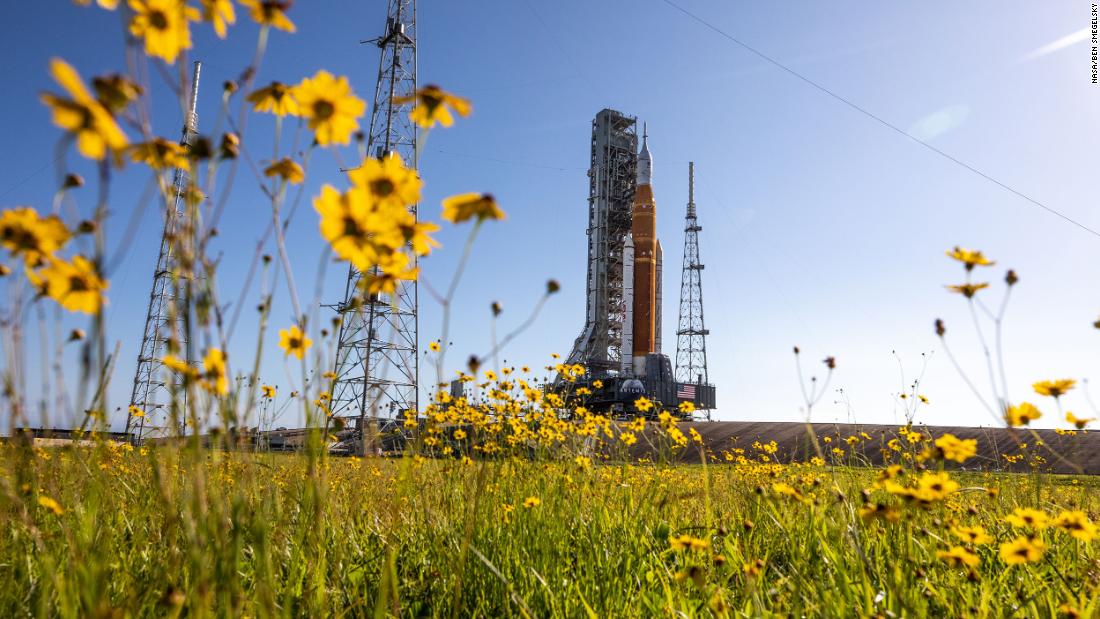
The Artemis I mega rocket may be launching on its trip to the moon on August 29, September 2 or September 5, according to Jim Free, associate administrator for NASA’s Exploration Systems Development Mission Directorate, during a news conference Wednesday.
The uncrewed Artemis I will launch on a mission that goes beyond the moon and returns to Earth. This mission will kick off NASA’s Artemis program, which aims to return humans to the moon and land the first woman and first person of color on the lunar surface by 2025.
The launch window will open at 8:33 a.m. ET on August 29 and stay open for two hours. If Artemis I launches then, the mission would last for 42 days and return to Earth on October 10.
The September 2 launch window opens at 12:48 p.m. ET and lasts for two hours and would result in an October 11 return, and the September 5 window opens at 5:12 p.m. ET and lasts for 90 minutes, resulting in a return on October 17.
The Artemis team arrived at these dates after successfully completing a crucial final test called the wet dress rehearsal for the Space Launch System rocket and Orion spacecraft on June 20. The test simulated every stage of launch without the rocket leaving the launchpad at Kennedy Space Center in Florida.
The misssion team rolled the rocket back into the Vehicle Assembly Building on July 2 to assess issues that cropped up during the test, including a hydrogen leak.
During repairs for the leak, engineers found a loose fitting on the inside wall of the rocket’s core engine section. The work of tightening the collet, a fist-size ring, is now complete, said Cliff Lanham, senior vehicle operations manager for NASA’s Exploration Ground Systems Program.
Additional testing and activation of systems continues while the rocket is in the building before it returns to the launchpad.
The launch dates could move and are “not an agency commitment,” Free said. “We’ll make the agency commitment after a flight readiness review just a little over a week before launch.” Weather and other factors could impact when the rocket launches.
“We’re going to be careful,” Free said.
The Artemis I mission is a test flight with a number of objectives, including trying out how Orion’s heat shield holds up to the high speed and heat the spacecraft will encounter as it reenters Earth’s atmosphere after returning from the moon.
It will travel at about 24,500 miles per hour (39,429 kilometers per hour) and experience temperatures half as hot as the sun outside of the heat shield, according to Mike Sarafin, Artemis mission manager. This is much hotter and faster than when spacecraft return from low-Earth orbit.
Other objectives include demonstrating operations and flight modes of the rocket and spacecraft ahead of crewed missions, retrieving Orion after it splashes down in the ocean, and completing the mission as planned, Sarafin said.
The team is prepared to adapt along the way to any challenges and some objectives may shift as a result, he said.
The Artemis team shared the update on the 53rd anniversary of the historic Apollo 11 moon landing.
“Today’s anniversary is a good reminder of what a privilege it is to be a part of a mission like this,” Sarafin said. “It’s not just the Artemis I mission, but it’s a bigger picture of returning to the moon and preparing to go to Mars.”